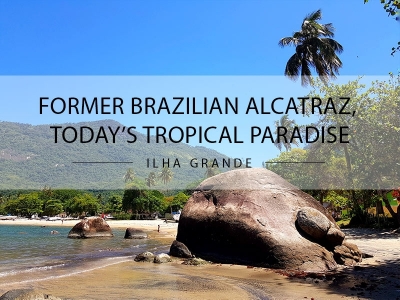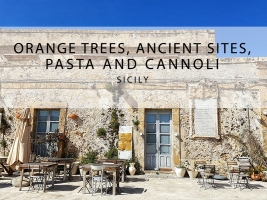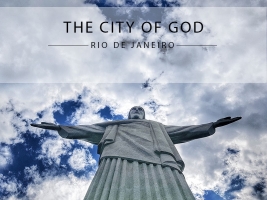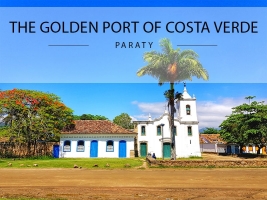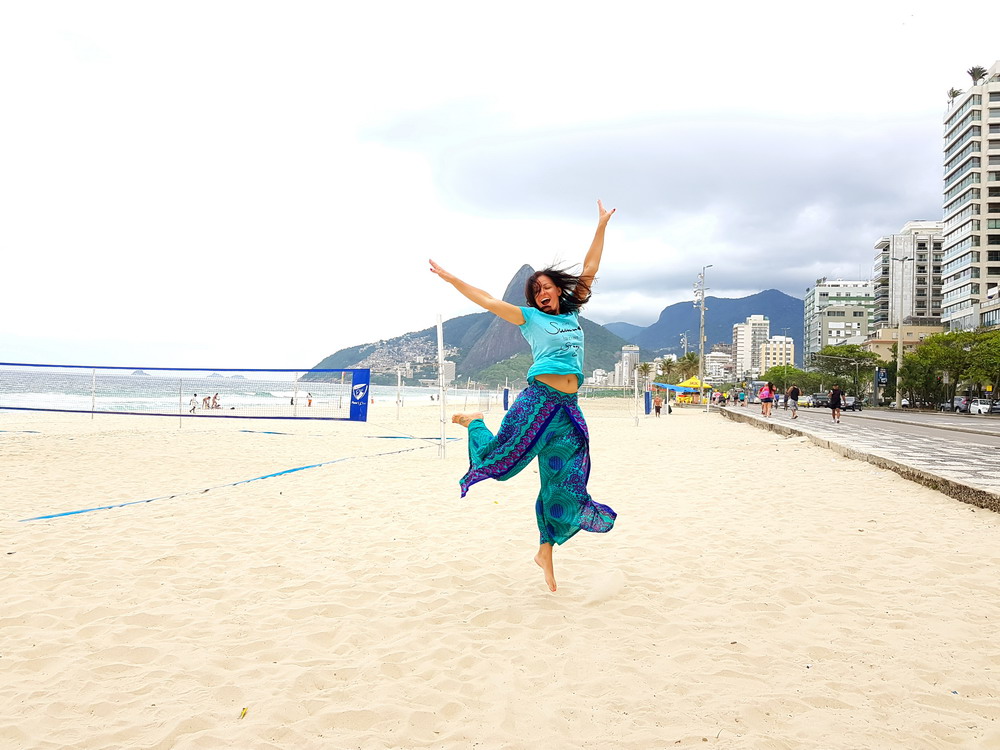
When me and my husband were checking out the available accommodations of Ipanema, most of the beachfront hotels were already fully booked or they were very expensive. So we found the Windsor Plaza Hotel, just two blocks from Copacabana beach. The hotel was a bit overdated, but very cozy, the rooms were clean, big and comfortable and the price was reasonable. The breakfast was rich, the staff was amazingly kind, helpful and we felt safe. Some of the staff even spoke English, but even if they didn't, they all spoke Spanish, so the comunication was doable. We had a free transfer from and back to the Galeão Airport (GIG) with Shuttle Rio (Bavaria Viagens Turismo Ltda.). It took us about half an hour to get from the airport to the hotel. The roads were really destroyed, but that was not what we came for...
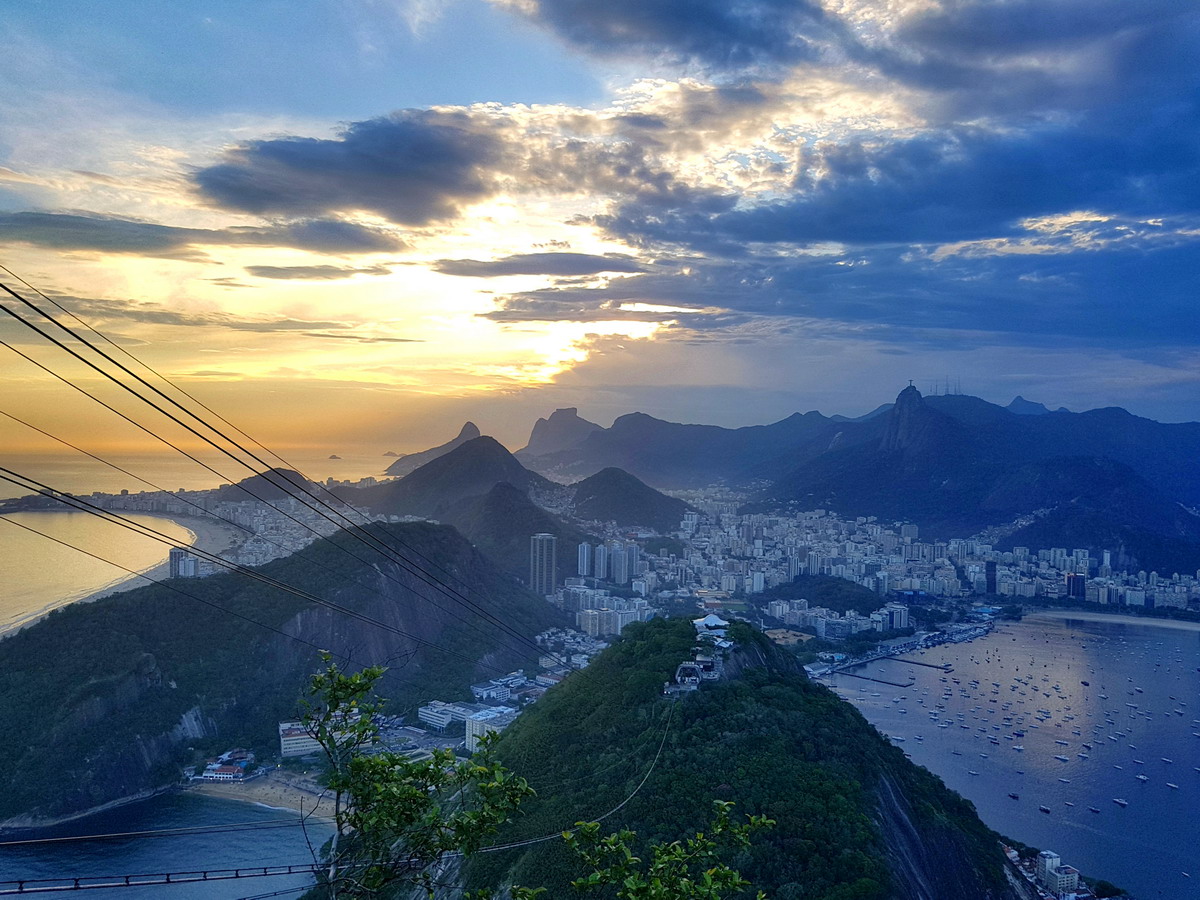
Rio is like a forbidden love: it hits you like thunder, it teaches you how to dance, all of a sudden you get carried away by the most magical rainbow above the horizon, but then again, you can never be too relaxed, because God is watching you.
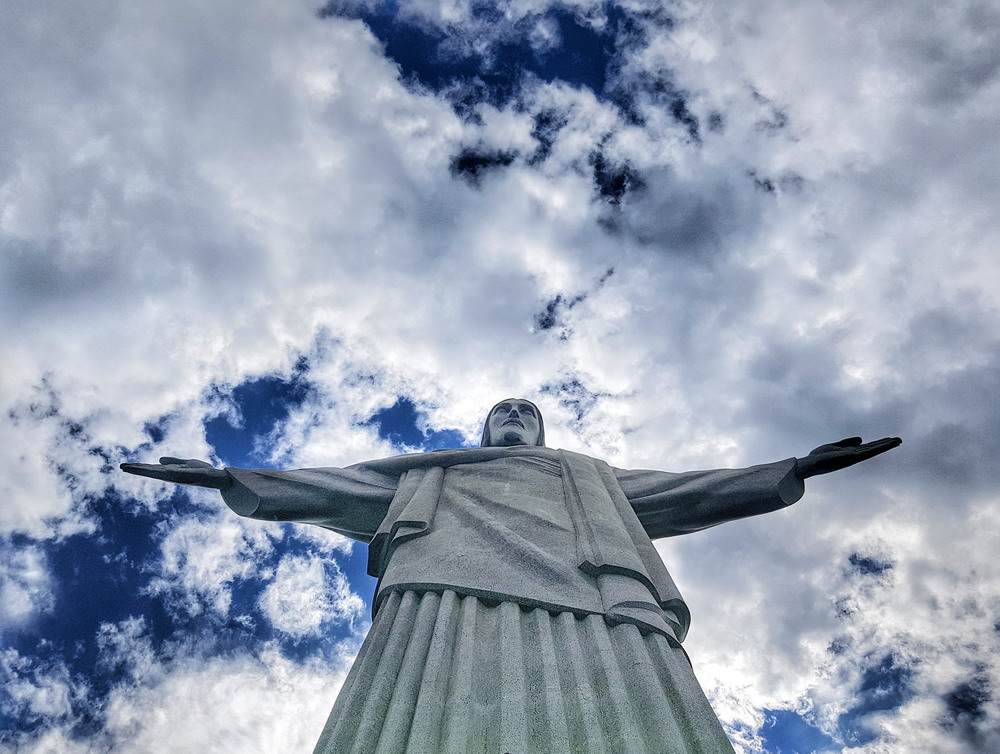
The day we arrived, Rio was hosting The Pride Parade and we immediately fell into the carnival amtosphere of dancing and loud partying. All the main roads were closed for traffic, there was a lot of police, but not at all in a disturbing way. A few days later, on November 20th, they were celebrating a regained awareness by the black community about their great contribution to the country, called The Black Awareness Day or Black Consciousness Day (sometimes also called Zumbi Day). Zumbi dos Palmares (1655 - November 20, 1695) was an important warrior figure and one of the pioneers of resistance to slavery in Brazilian history. That day some of the main roads were closed for traffic too, so we could easily walk down the famous Copacabana beach. Of course without expensive jewelry, purses, cameras, etc. All you need is a bit of caution, after all this is Rio.
When someone mentions Rio de Janeiro, our first thoughts are probably: samba, Carnaval, football, favelas, Copacabana and Ipanema... But, if you ask me, which was the most common word I heard (or saw written somewhere) in Rio, it was none of those - it was Carioca...
Carioca - she is Rio-born and exudes natural style, roused by the Brazilian state of mind.
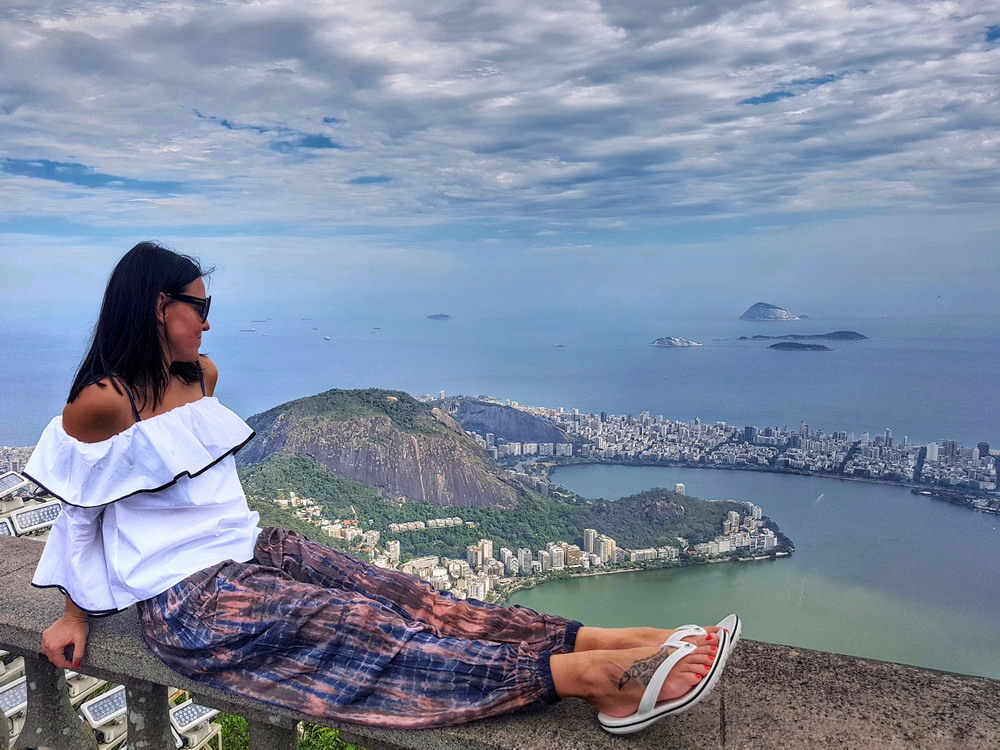
Our first trip was visiting the main Rio attractions. It is possible to visit all the popular sites in just one day. We did it the very first day we came, because later on the weather forecast was rainy. Everything regarding this trip we arranged at our hotel desk. Picking up was on time. We passed the Cathedral de San Sebastian, a catholic church, which architecture reminds of Machu Picchu, so make sure you pass by when in Rio. Our first stop was the panoramic view, overlooking the lagoon 'Lagoa Rodrigo de Freitas' from the Corcovado mountain.
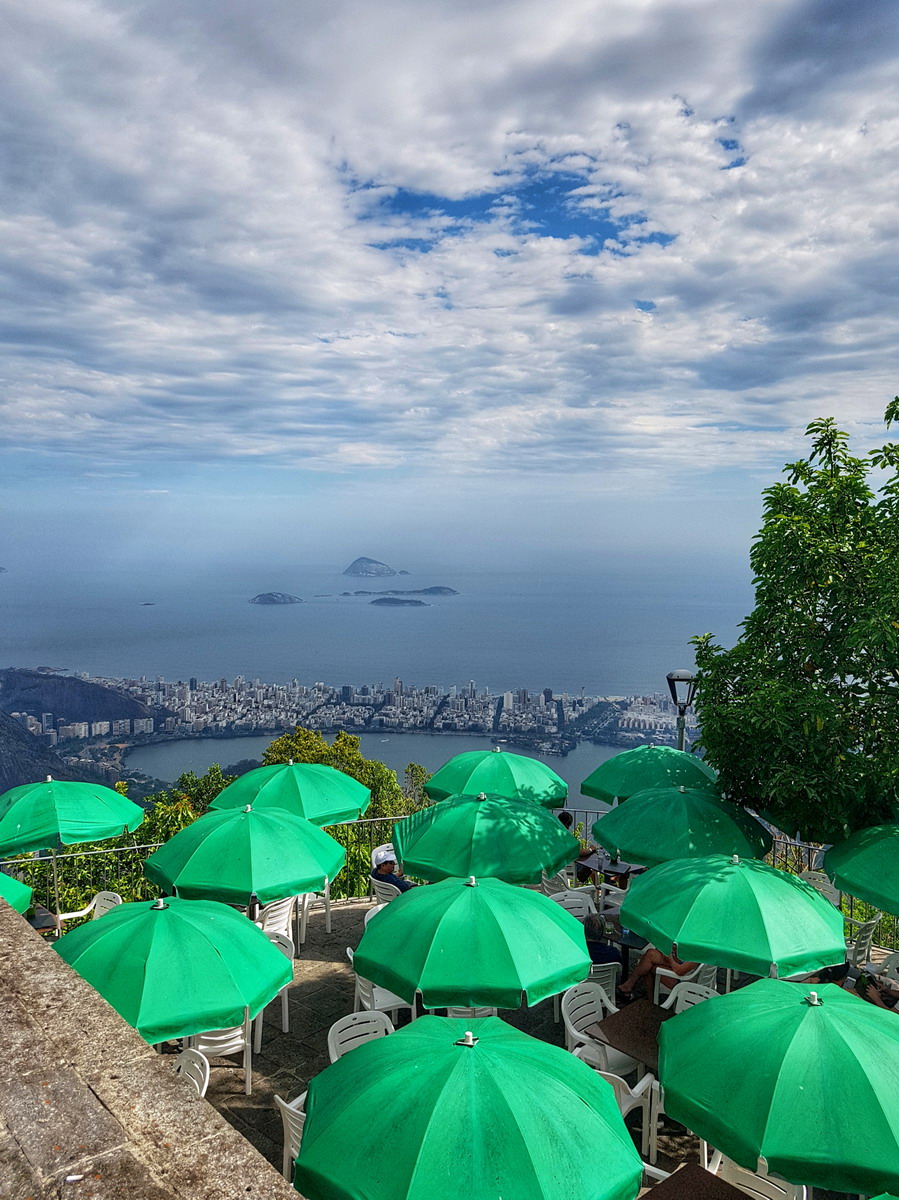
Corcovado and Christ the Redeemer (Cristo Redentor)
Christ the Redeemer on top of the Corcovado mountain in 'Parque Nacional da Tijuca' is probably world's most recognizable statue besides Statue of Liberty in New York. In 1850 an idea of building a large Christian statue atop the Corcovado appeared as a monument to Princess Isabel, but the project was put on hold. The imposing 32 meters tall statue today is an important symbol of Christianity across the world and has also become a cultural icon of both Rio de Janeiro and Brazil. It was opened in 1931 and it is still overlooking the City of God (Cidade de Deus) from the top of the Corcovado mountain, also listed as one of the New Seven Wonders of the World.

I read somewhere that the best way to get on top of the Corcovado is with the cog train, because of the ride up through the Atlantic forest, but there are lifts and escalators too. Although we went there via organized tour with the shuttle and it was also great. Then we used the escalators to reach the top of the mountain and the statue. Look, who we met...
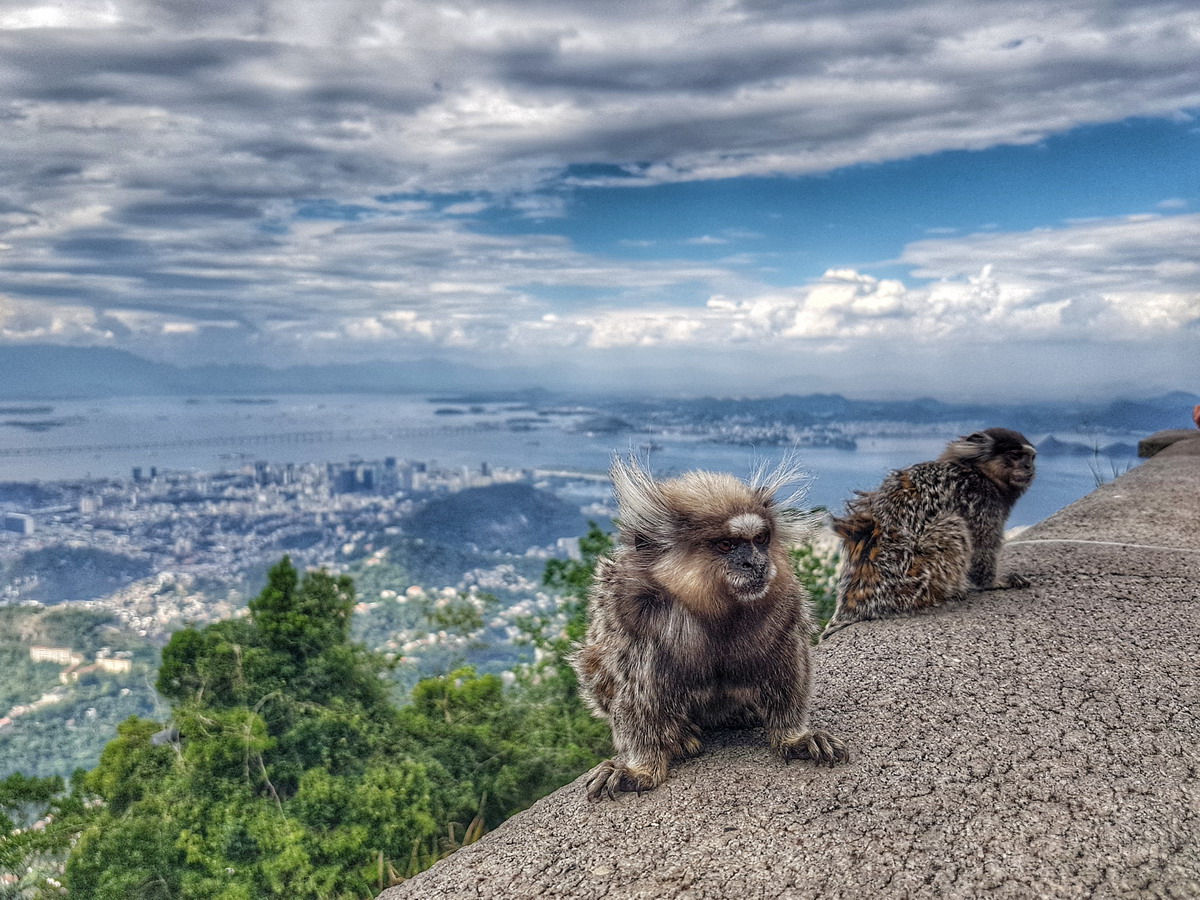
We found that the most important, because you don't want to lose time to wait in an endless line for the tickets, if you have a whole day tour and many things to see. Our tour guide arranged everything, so we felt completely relaxed.
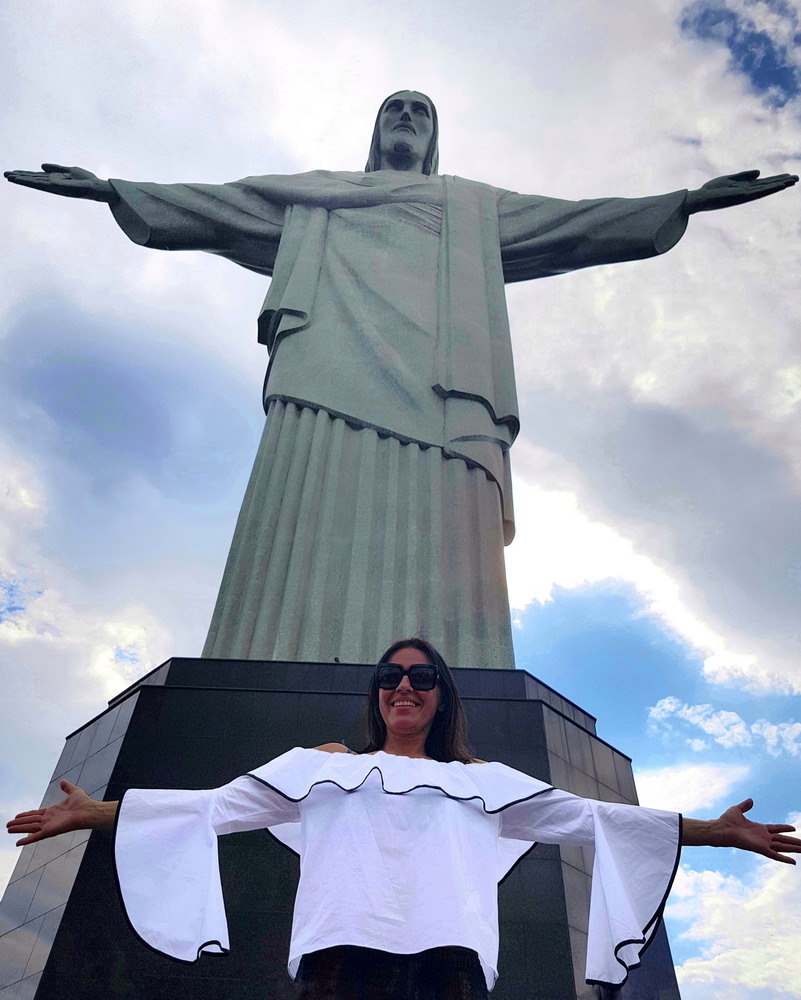
Just a few steps higher, there he was! The crowd was enormous, so it was difficult to take a photo alone with him.
Tijuca Forest National Park (Parque Nacional da Tijuca)
It is considered to be the largest urban forest in the world. It is the home for rare exotic species of the Brazilian fauna and flora. Tijuca offers some comfort zones, as a visitor center, where you can get to know their permanent collection of native species, there are also some picnic areas and restaurants.

At the back Sugar Loaf Mountain, where we were headed later on and in front: can you see him in my glasses :) ?
Sugar Loaf Mountain (Pão de Açúcar)
I still can't decide which Rio view was my favorite, because there were so many. I would say the views from Corcovado and the one from the Sugar Loaf Mountain were definitely worth visiting. Sugar Loaf Mountain is rising 396 m (1,299 ft) above the harbour. It is included in absolutely all sightseeing tours in Rio.
From the top of the mountain you can see Guanabara Bay, Botafogo Bay, Pedra da Gávea mountain, Serra do Mar (Sea Ridge) and the vastness of the Atlantic Ocean.
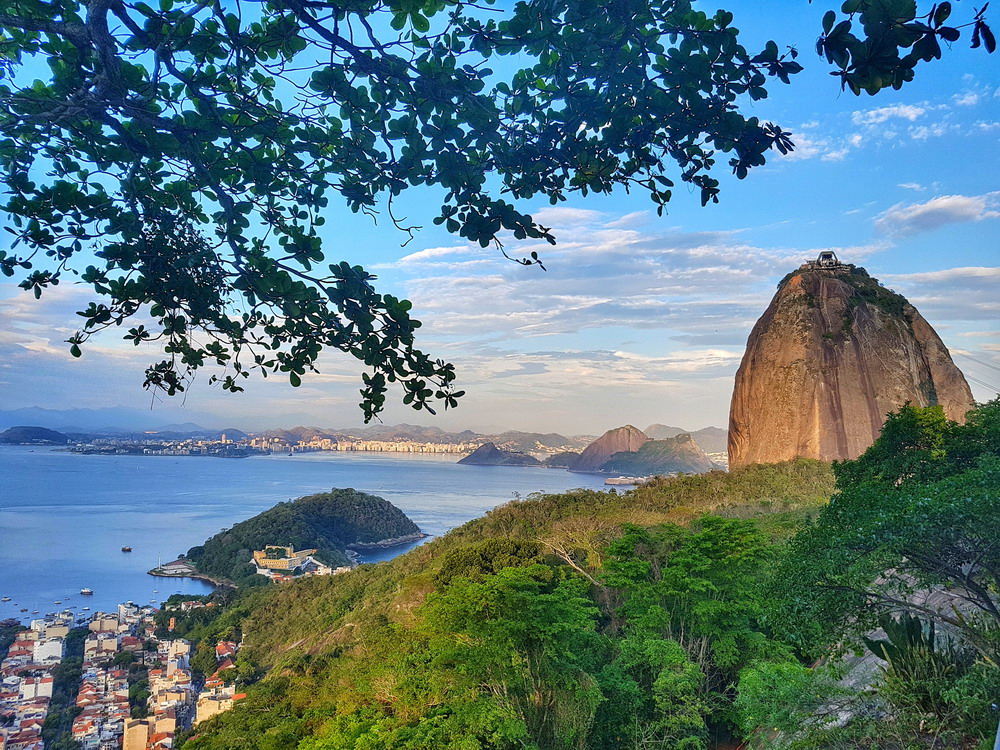
Its name is said to refer to its resemblance to the traditional shape of concentrated refined loaf sugar.
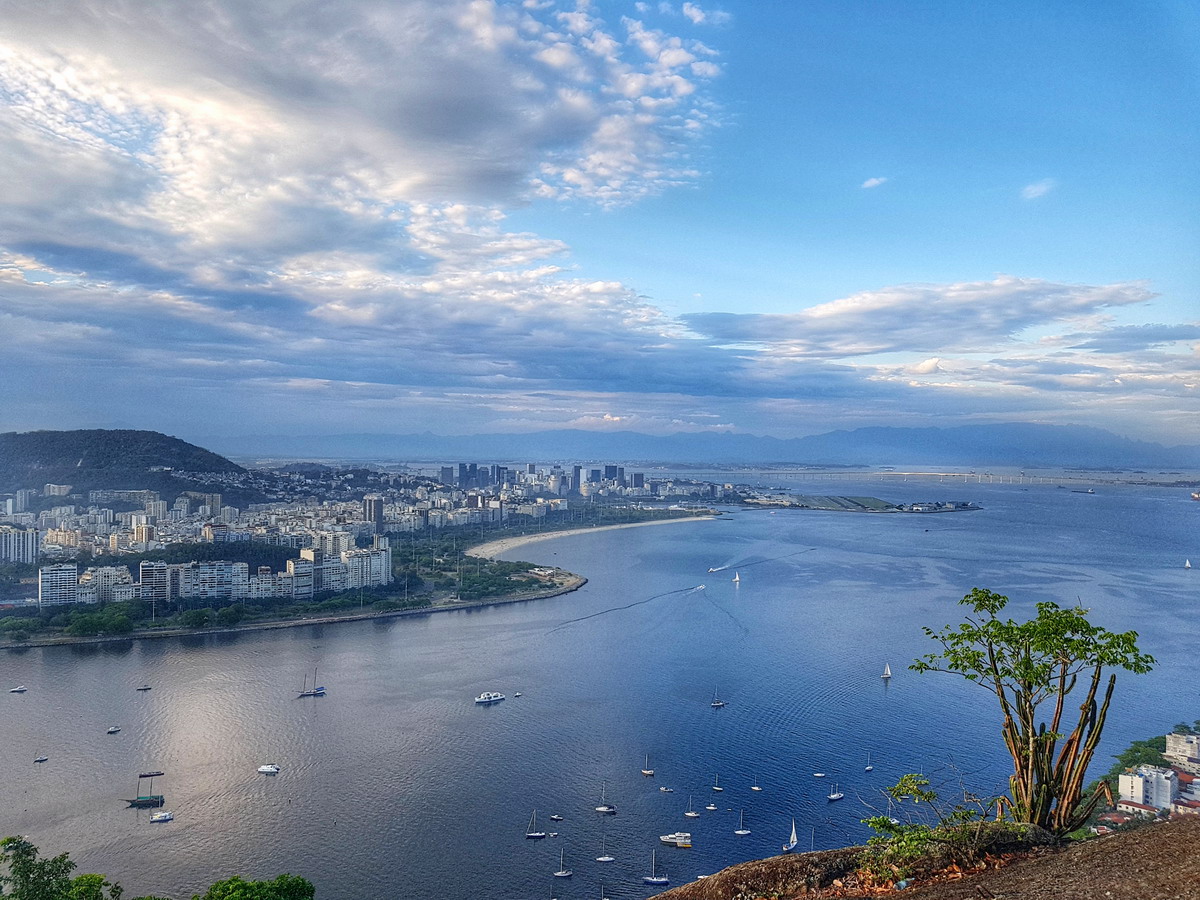
It is known worldwide for its cableway and panoramic views of the city and you need to take two cable cars to reach the Sugarloaf Mountain.
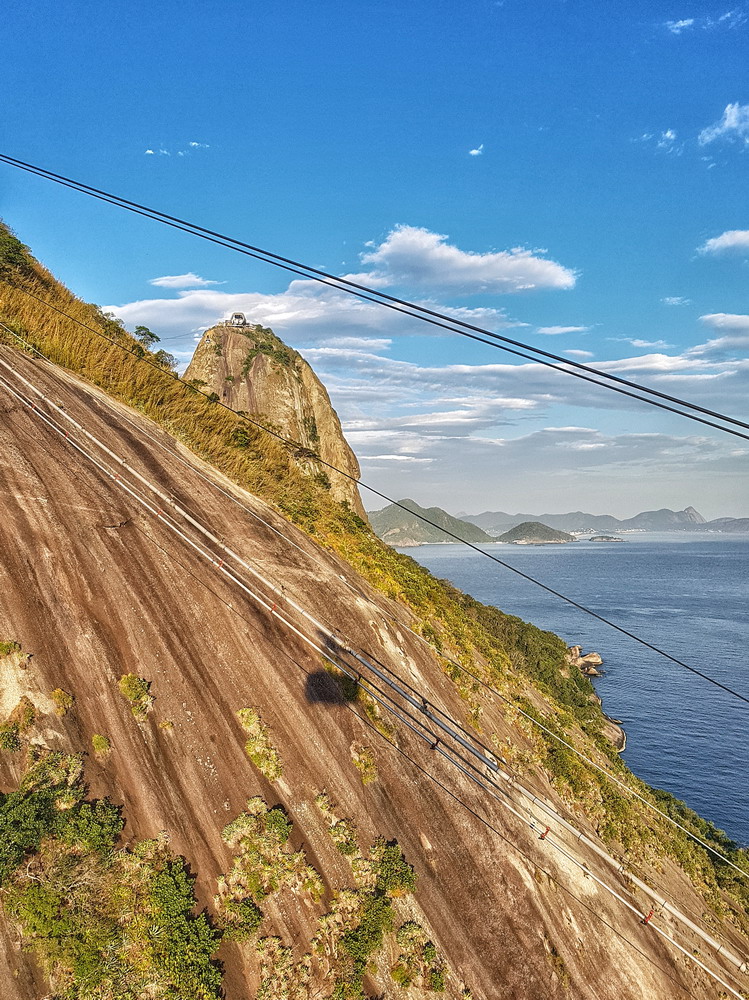
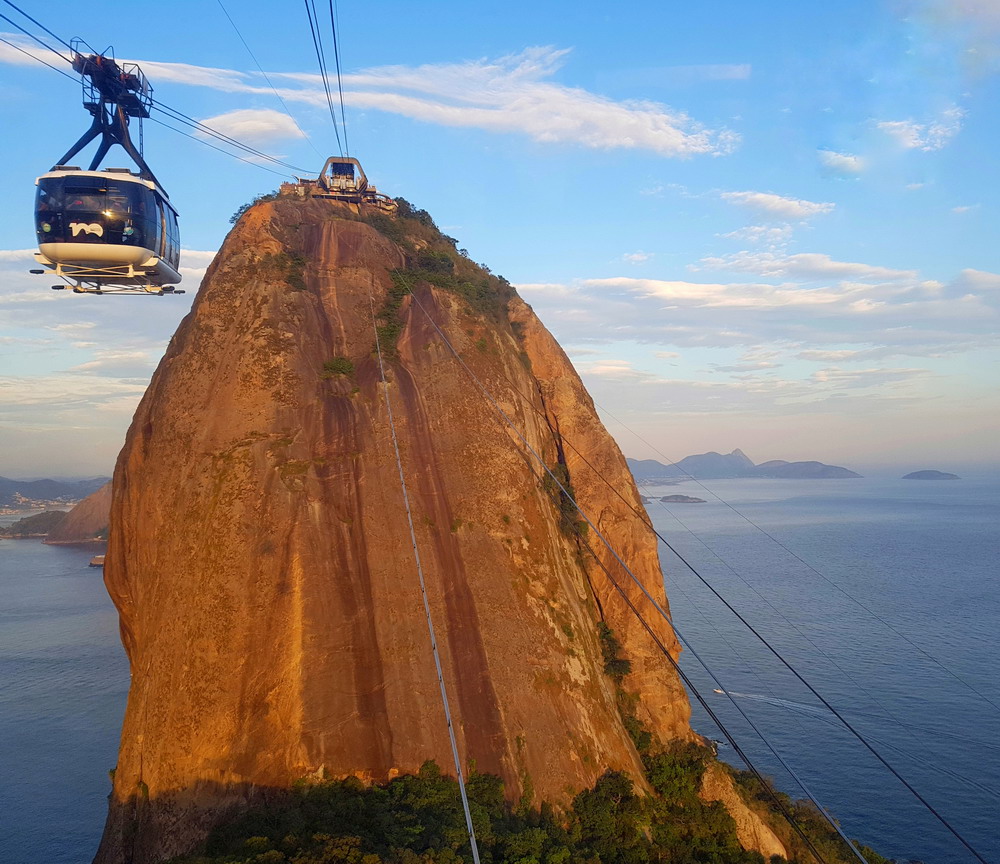
The peak at the mouth of Guanabara Bay on a peninsula juts out into the Atlantic Ocean. There are shops and bars on top of it, so make sure you have enough time to make some souvenir shopping while up there.
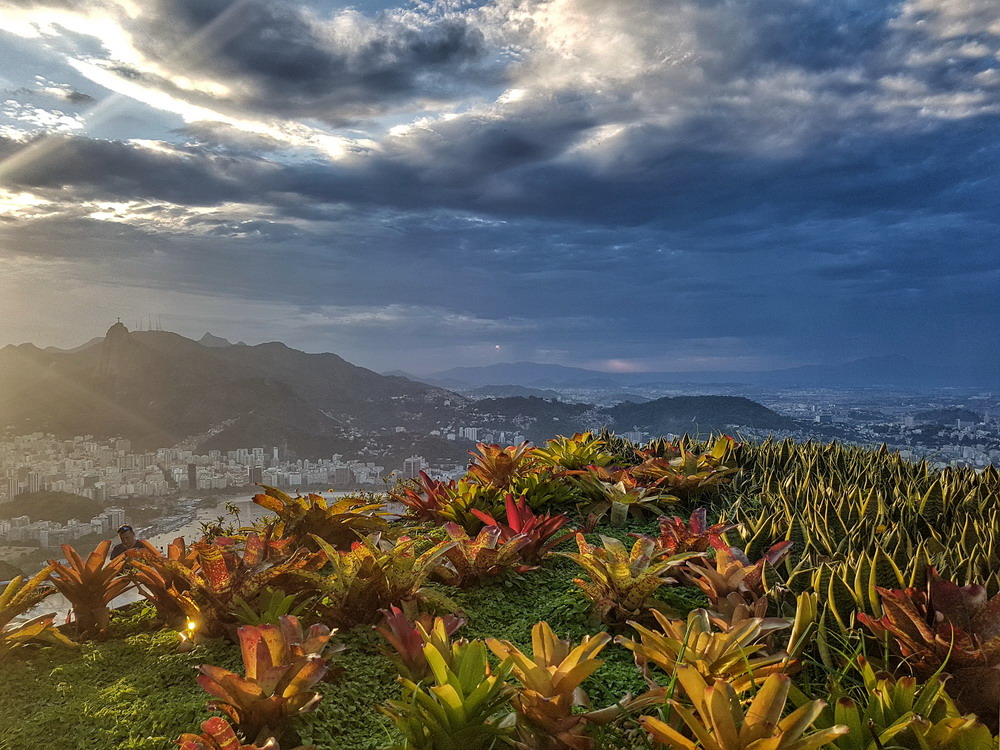
It is highly recommended to go up there with the local guide, because you won't need to stay in line, which usually is really long. Especially when we went back down it was already getting dark, but we visited it right on time - when the breathtaking sunset appeared.
.jpg)
Hint: If you want to leave your signature there, please bring a marker with you, because that one was totally dry. :-)
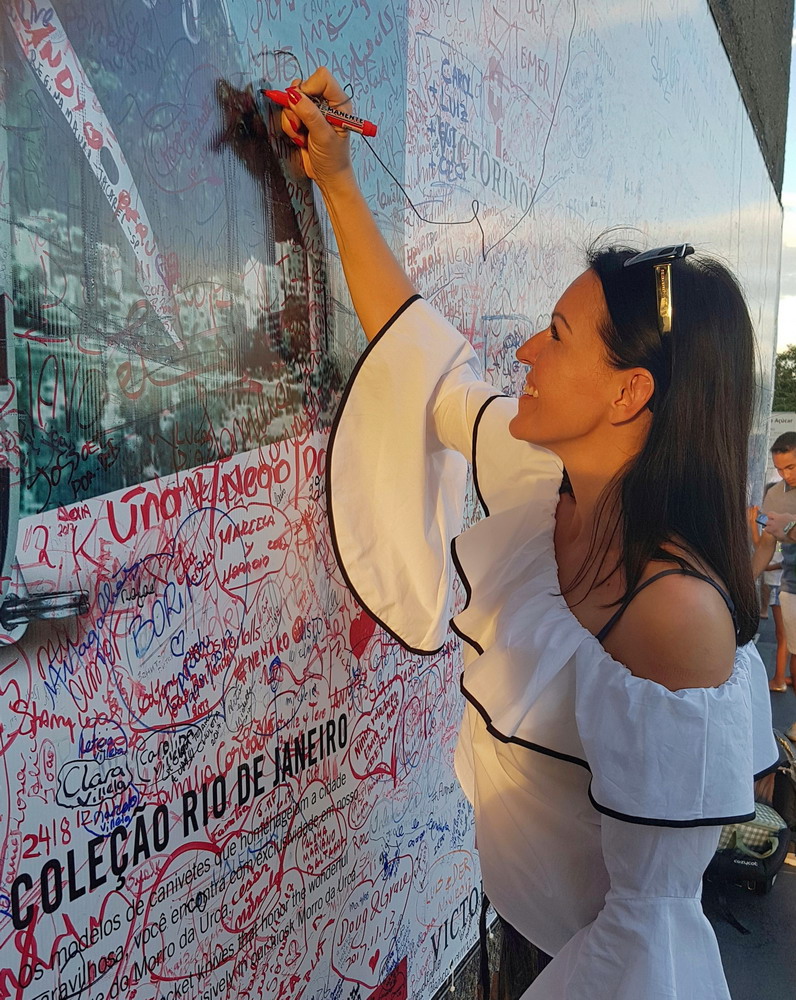
Copacabana beach (Praia de Copacabana)
Copacabana is nicknamed Princess of the Sea (Princesinha do Mar). Some say that the name Copacabana is derived from the Aymara language's words "kota kahuana", which mean "view of the lake". Who doesn't wanna see the wavy world famous mosaic sidewalk all along the beachfront? You can see all kinds of sports being practised at the beach, from soccer to volleyball, capoeira, samba dancing, etc. Would love to be there till the New Year's Eve to watch their traditional fireworks, but unfortunatelly no more vacation for us in 2017.
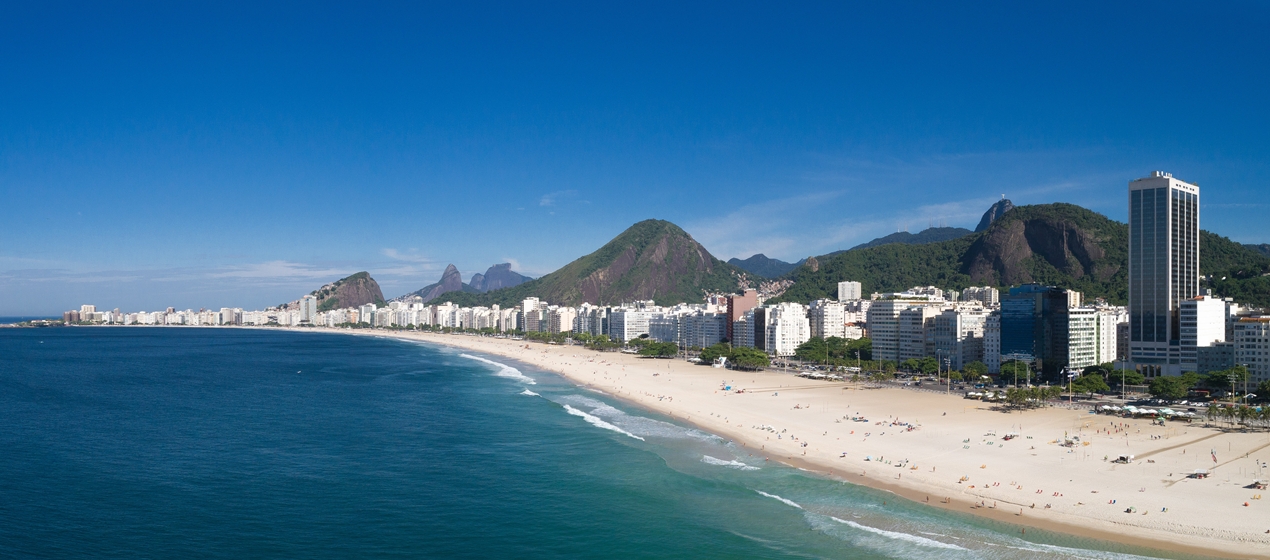
Copacabana beach on early December morning
Ipanema beach (Praia de Ipanema)
Ipanema, besides all the gorgeous views and Leblon district, was my favorite place in Rio. Ipanema is a liberal artistic place, from the famous Posto 9, which is loved by younger, diverse population, from surfers, students and hippies. There you can find exclusive villas and penthouses, various trendy bars and numerous gourmet restaurants.
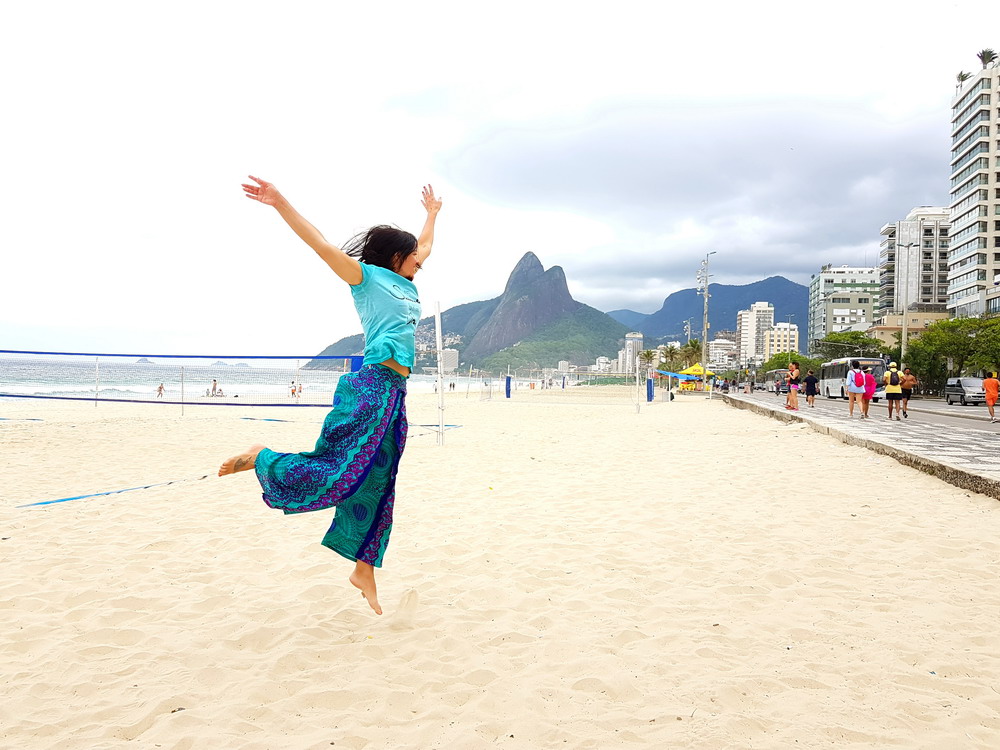
And then there was the world famous Ipanema beach with the beautiful white sand I adore... Who haven't heard of the famous brand of flip-flops, named after Ipanema. It defies the legendary Havaianas and it can be found at every Ipanema corner.
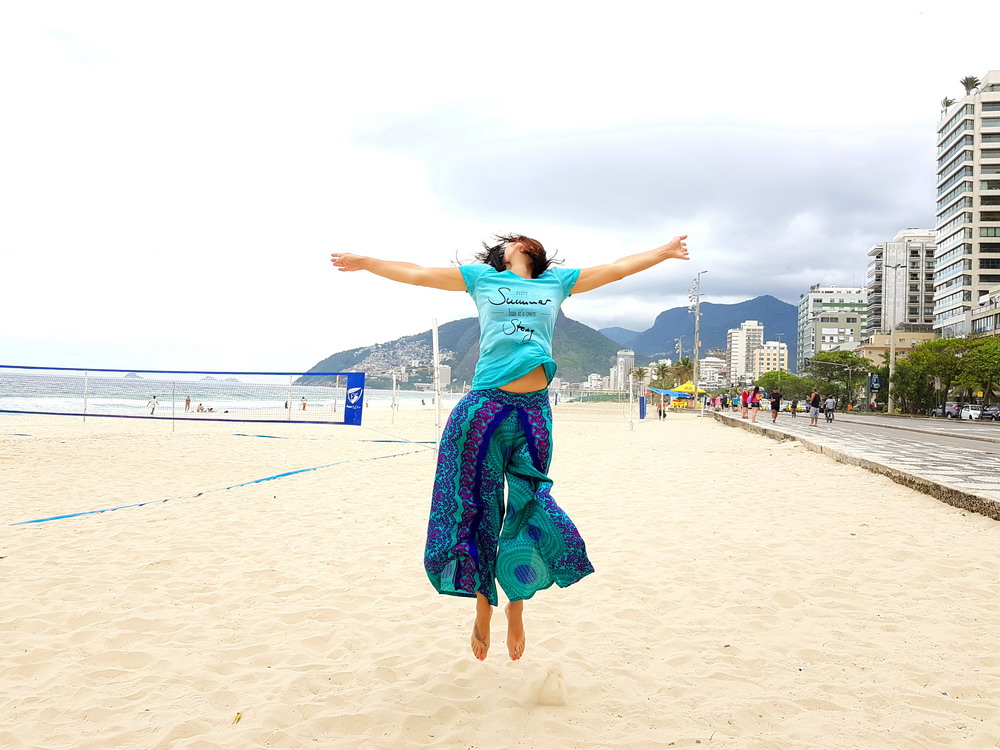
Rodrigo de Freitas Lagoon (Lagoa Rodrigo de Freitas)
I needed some time to realise, that it is not just the Atlantic Ocean, touching the lips of Rio, but also a huge lagoon, surrounded by mountains and it is right in the heart of The South Zone.

A taxi driver told us, as if the forests and beaches in privileged areas of Leblon, Ipanema or Jardim Botanico weren't enough, Rio also has Lagoa Rodrigo de Freitas to offer its visitors, not to mention the view of Christ de Redeemer.
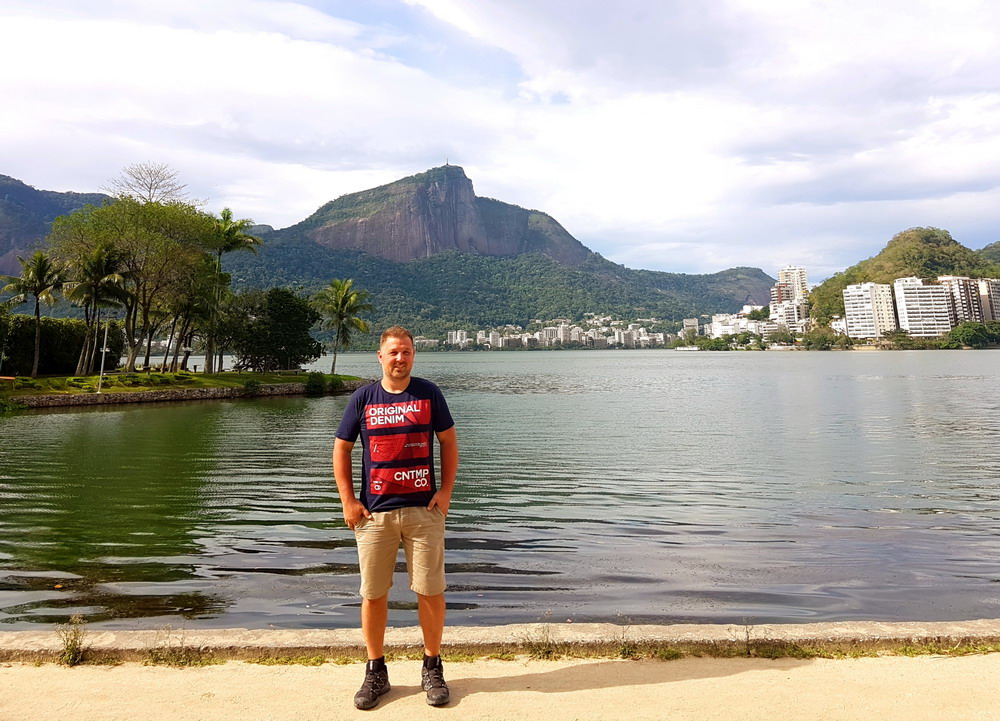
We kindly asked him to stop at the lagoon for a minute, as we were driving towards Leblon for lunch and he was more than glad to do it. We caused a small traffic jam, as we ran out of the car barefoot just to adjust ourselves for a short while to the lagoon living mode...
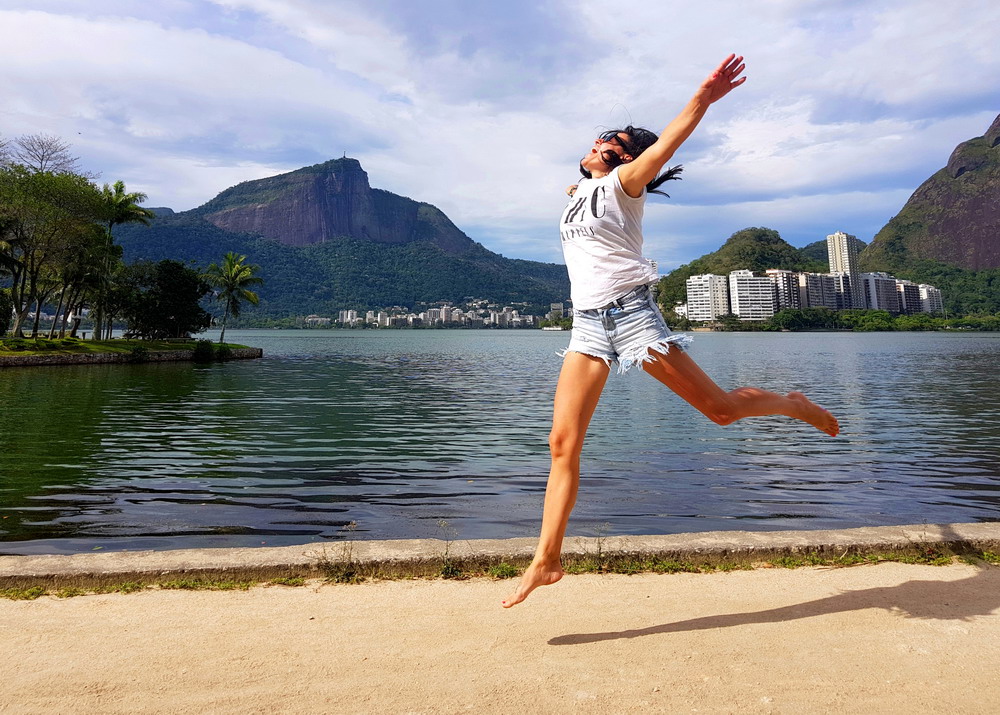
Arcos da Lapa
Built in the 18th century to improve water distribution and supply to the city, this is probably the most important monument from the Brazilian colonial period and one of the most popular landmarks of Rio. Today these 42 Roman-style arches represent a viaduct to antique trams connecting Carioca subway station to the district of Santa Teresa (I don't have a photo though). In the 19th century this was a meeting point for artists and today Arcos da Lapa is in the heart of Rio’s bohemia. Lapa is the best known for its samba.
Charming Santa Teresa
In the 18th century the streets of Santa Teresa used to be escape routes for slaves. This district is well known among travellers, mostly because of its colonial houses, historic ambience and live music. Largo dos Guimaraes is well known as the biggest swath of great restaurants. If you plan to visit Santa Teresa, don’t miss the world famous Selarón Staircase (Escadaria Selarón).
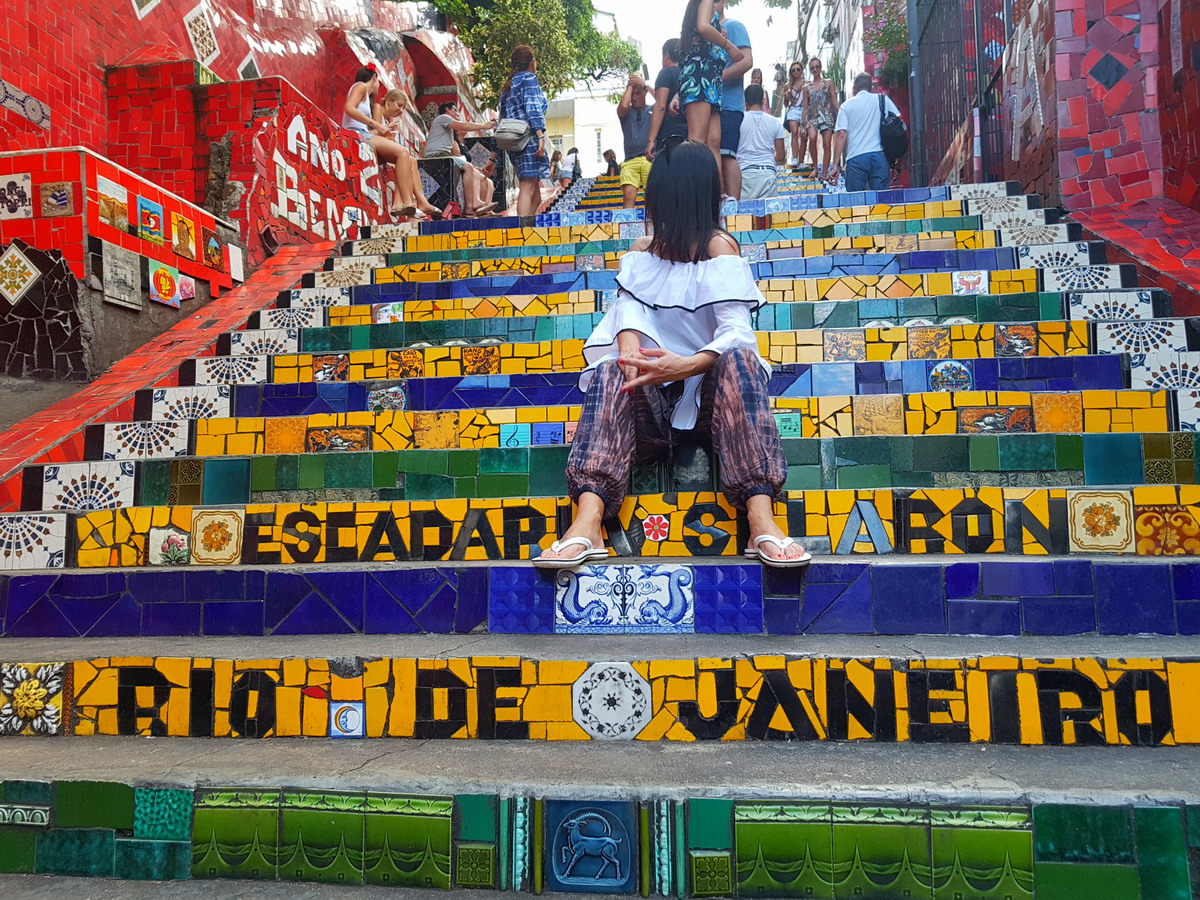
There are also very nice views of the North and South Zones. Unfortunatelly, when we visited Santa Teresa, it was still cloudy and since it was our last stop of all the Rio attractions at the end of the day, it was getting dark already. Sorry for the bad pics, but that's all I have.
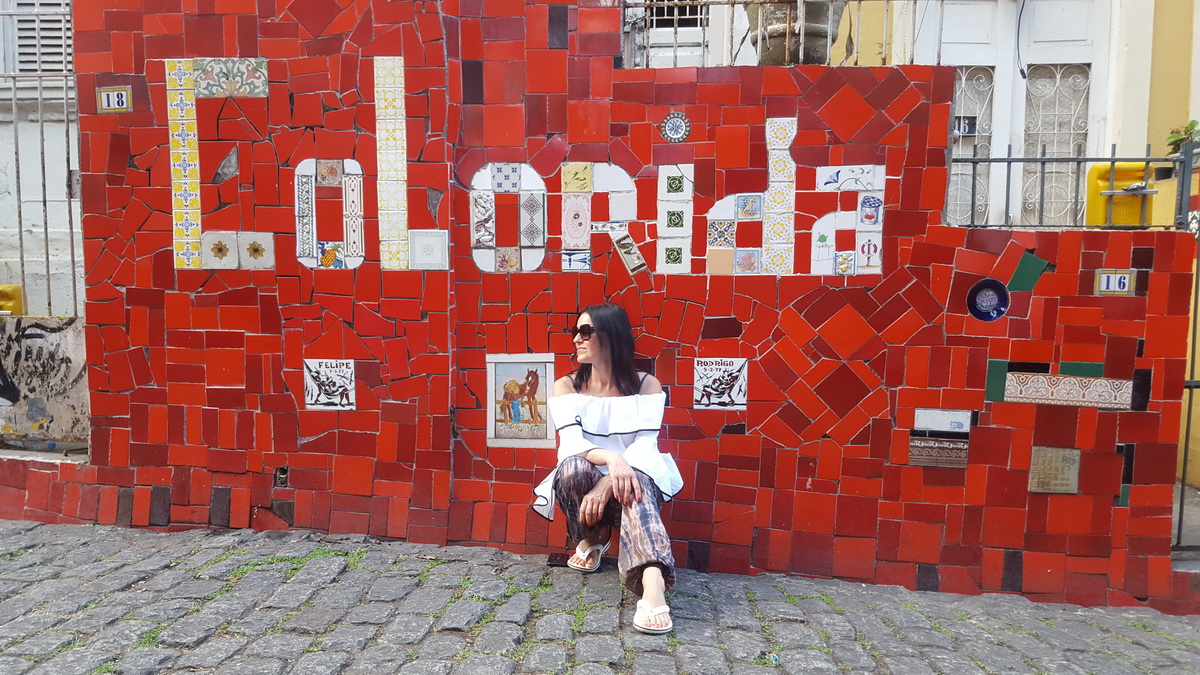
Favelas
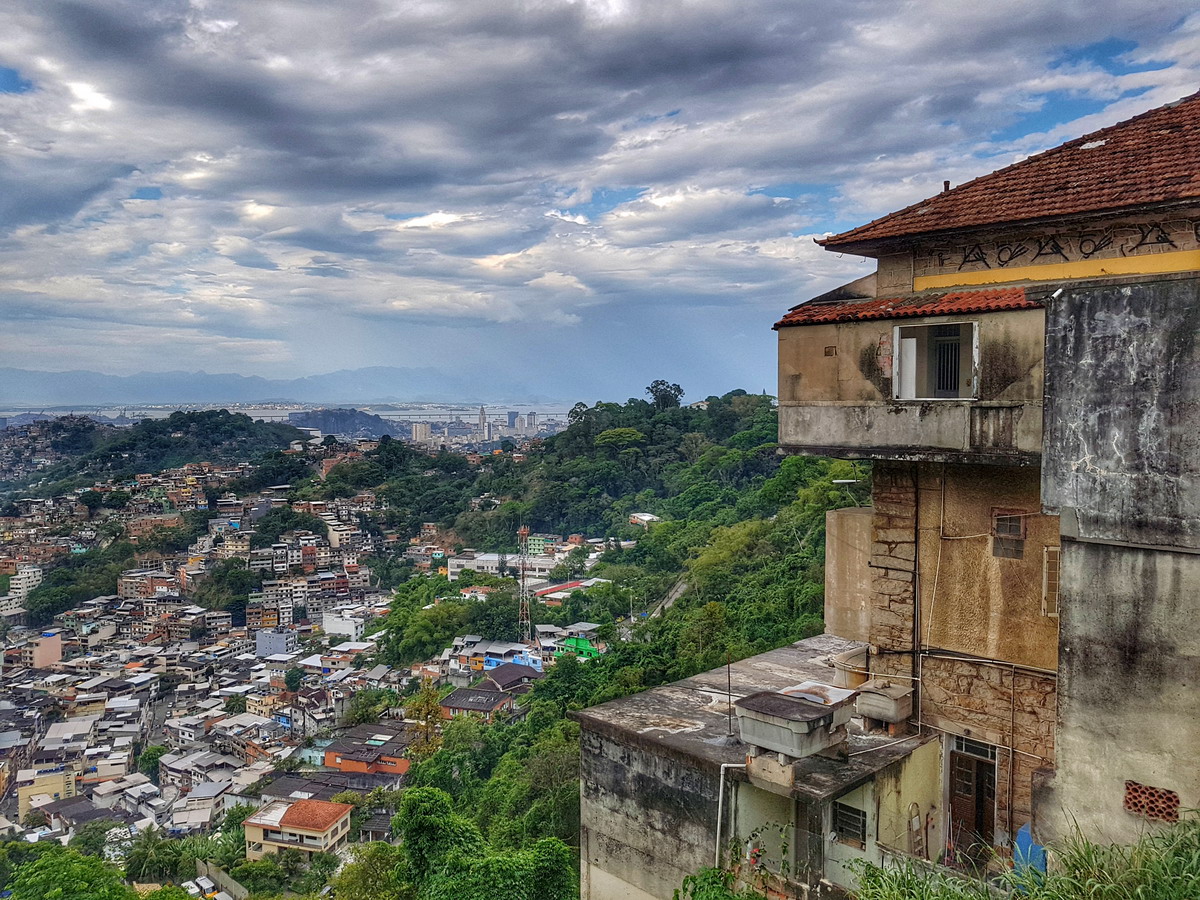
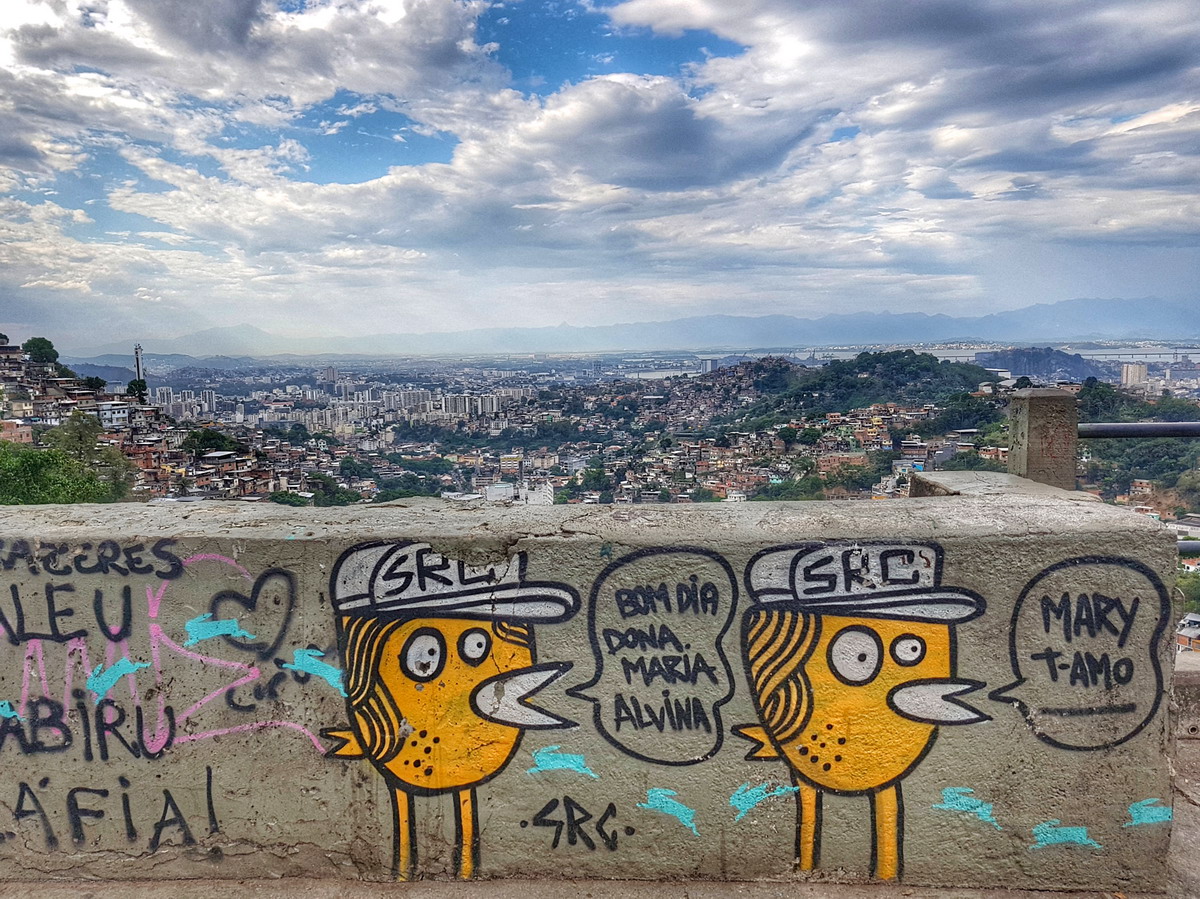
The photo below is overlooking the Dona Marta favela, which was one of the most popular 'Fast & Furious' movie locations.
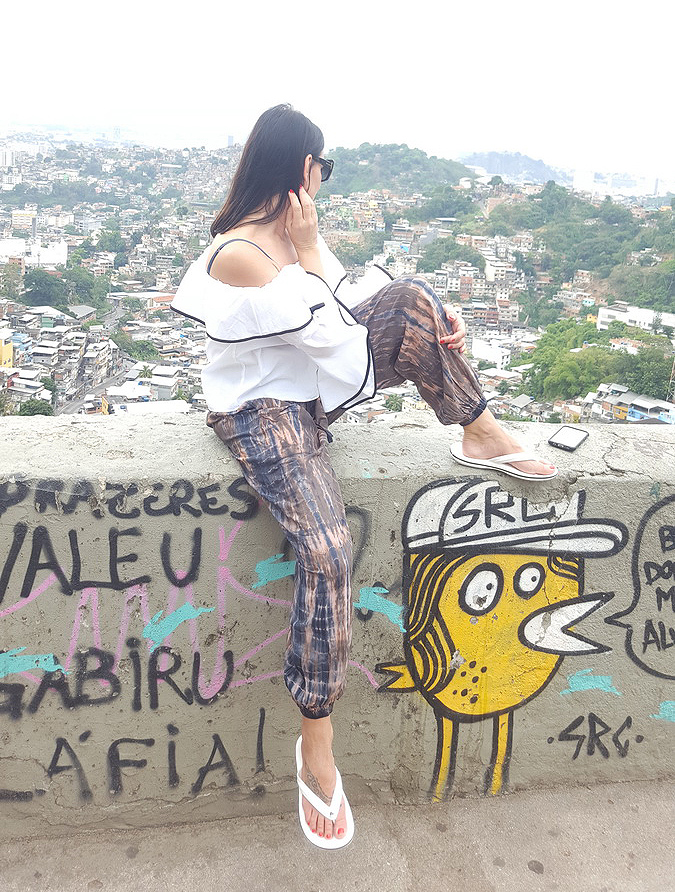
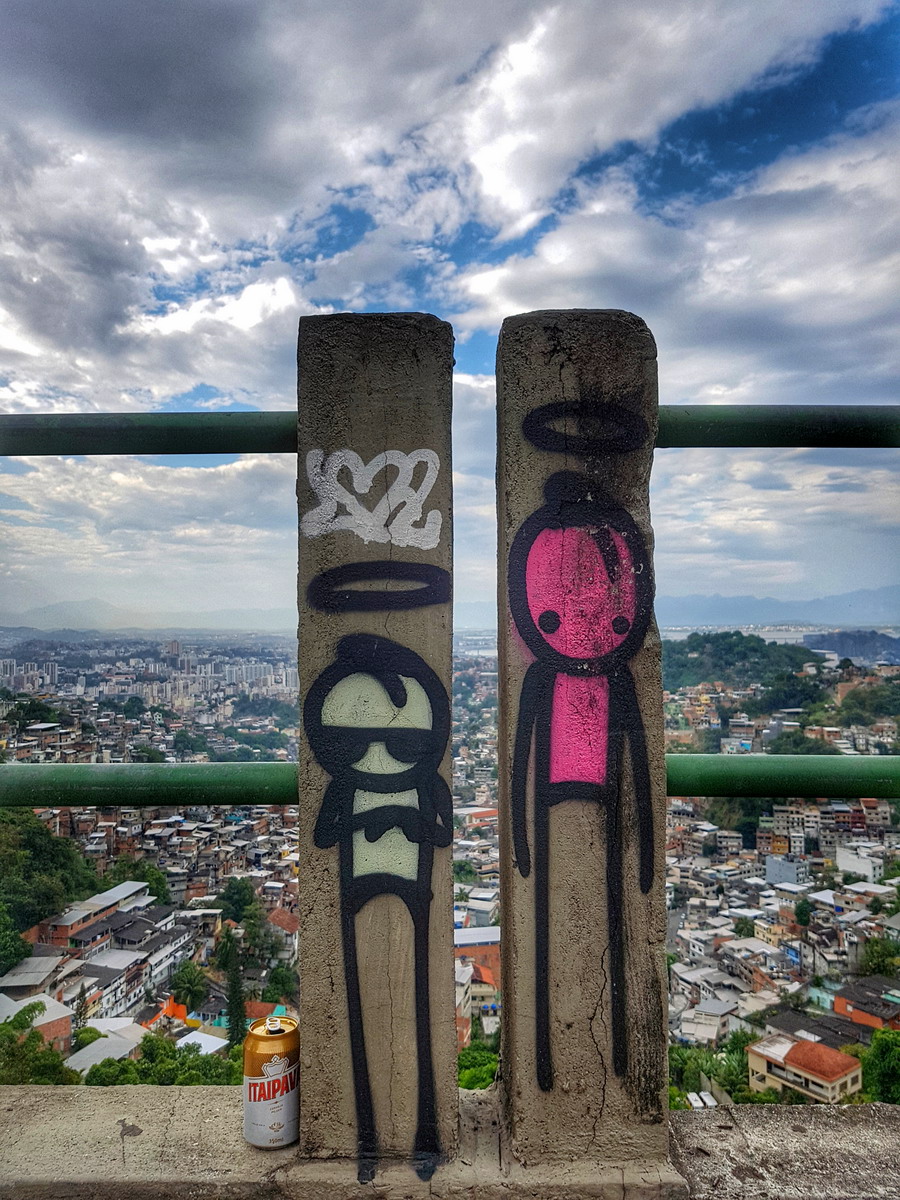
Sambódromo
The world's most famous carnaval happens on the streets of Rio and Sambódromo is the main stage for Rio de Janeiro samba schools, parades and the amazing show Rio has to offer. The place is also used for the big rock concerts. Our local guide told us about 'Mangueira Samba School' ('mangueira' means a mango tree in Portuguese), whose dancers presents themselves in rose and green costumes.
Pedra do Telegrafo
Probably the most funny (and a bit scary) experience we had in Brazil. First of all, if it wasn't for the great staff at the reception of our hotel and the wonderful Mrs. Paola, I doubt that we would have found it by ourselves, because she told us we would have to take three different transportations (the metro and then change two bus lines), plus it was our last day in Rio, so we had to be sure we didn't run late or that we didn't get lost on our trail. Paola recognized our doubt and she immediately made three phone calls and in a matter od five minutes she arranged us a private hotel driver with a hotel car for the price of cca. 85 eur altogether. The driver then drove us 57 km out of Rio and left us on top of a village (the road was extremely steep, curved and narrow, in one moment the engine of our Opel Zafira suddenly stopped and we thought we would end up in a ditch or in some house, which were on the both sides of the road). He asked us how long it would take us to come back from the hill, but we didn't have any idea, so an older local guy nicely explained us that it usually takes about three hours to come back from the top. If you want to take a photo of the popular rock, you must wait in line for quite some time, especially when the weather is sunny.

I guess we were a bit lucky with extremely cloudy weather that day and when we reached the top after half an hour hike, it already started to rain a bit, but luckily it stopped quickly too. My husband made a bet, that I couldn't do it in my cowboy boots, so you can see that I won, that's why he is hanging over the cliff. :-D
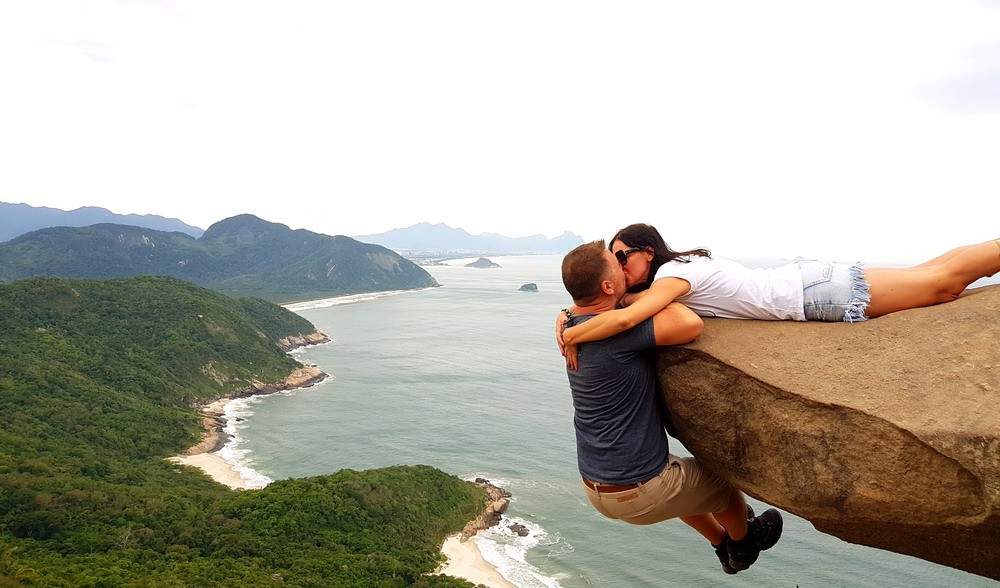
We waited for about half an hour to take some pictures and in the meantime the others waiting to step on the rock, cheered up the rest of us and it was a lot of fun, lots of laughs, I would do it again in a sunny weather.
Where to eat in Rio?
What I really liked about Rio was the fact that you didn't even have to step off the streets to find yourself a snack: churrasco - roasted meat on a stick, served with/without 'farofa' (manioc flour), queijo coalho - hot cheese, prepaired on a small stove, served on a stick, 'bem gelado agua de coco' (well chilled coconut water) in cups or takeout cartons, maté, caipirinhas (Brazilian unofficial national drink), cachaça (pinga or aguardente), The major restaurant strips are Rua Dias Ferreira in Leblon and Rua Barão da Torre in Ipanema. In Rio every cuisine is well represented: Italian, Spanish, German, Lebanese, French, etc.
Zuka Restaurant, Leblon
Leblon is famous for its most decadent dining scene in Rio. So, we decided to check it out. After some internet stalking in our hotel room we chose Zuka Restaurant. I like restaurants, where the open-concept architecture allows the patrons to observe the whole preparation process, their careful handling of food and its ingredients.
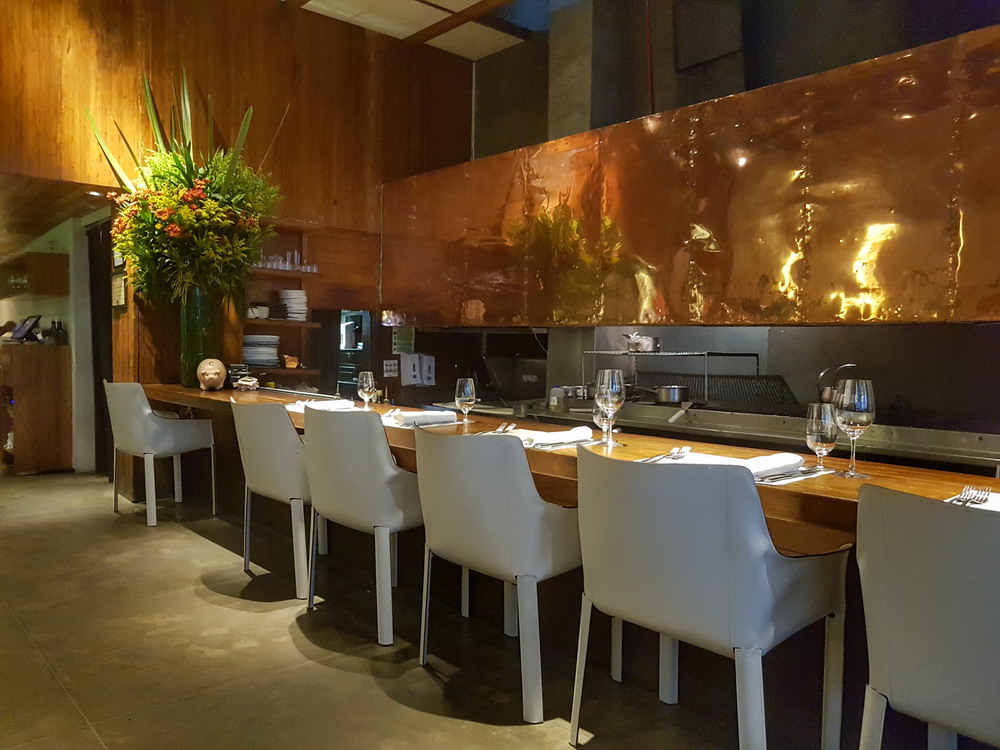
I will tell you, what you expect me to tell you and I will not lie - the food in Zuka was delicious. For appetizers we tasted seared tuna in truffled ponzu and free range egg yolk (R54), white fish ceviche with ‘biquinho’ pepper (R54) and Brazilian crispy beef cake with dark mustard (R35).
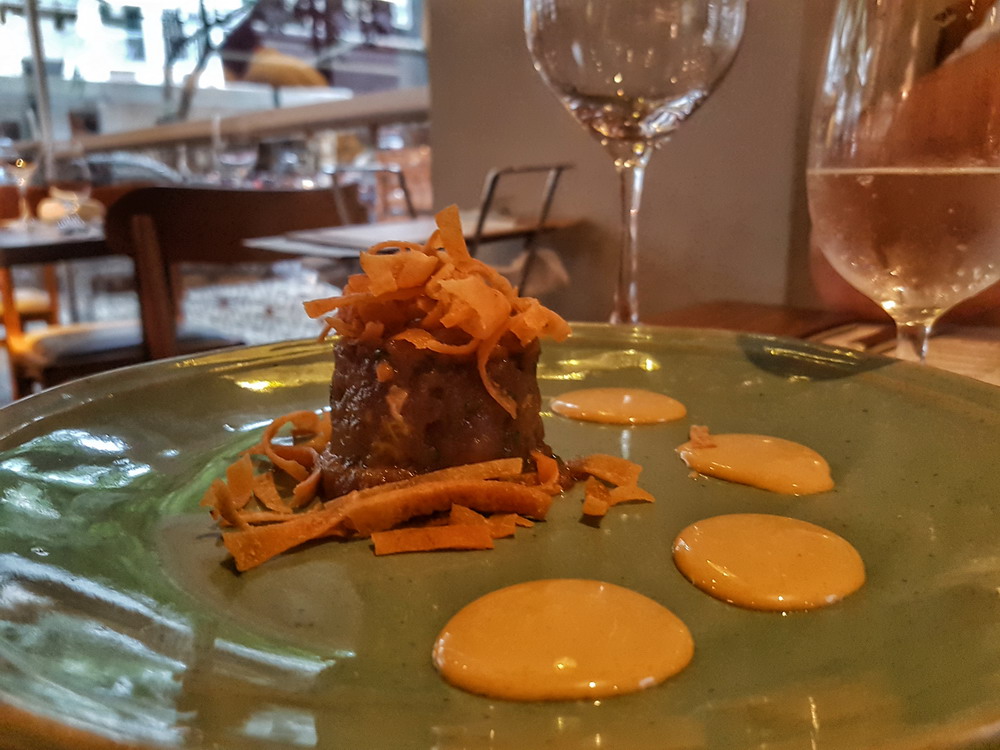
For the main dish I went for the tenderloin steak in herbal ghee with goat cheese risotto and crunchy leeks, which costed R$92 and Greg took the cod fish with roasted onions, black olives and sweet potato cream 'au gratin' R$89.
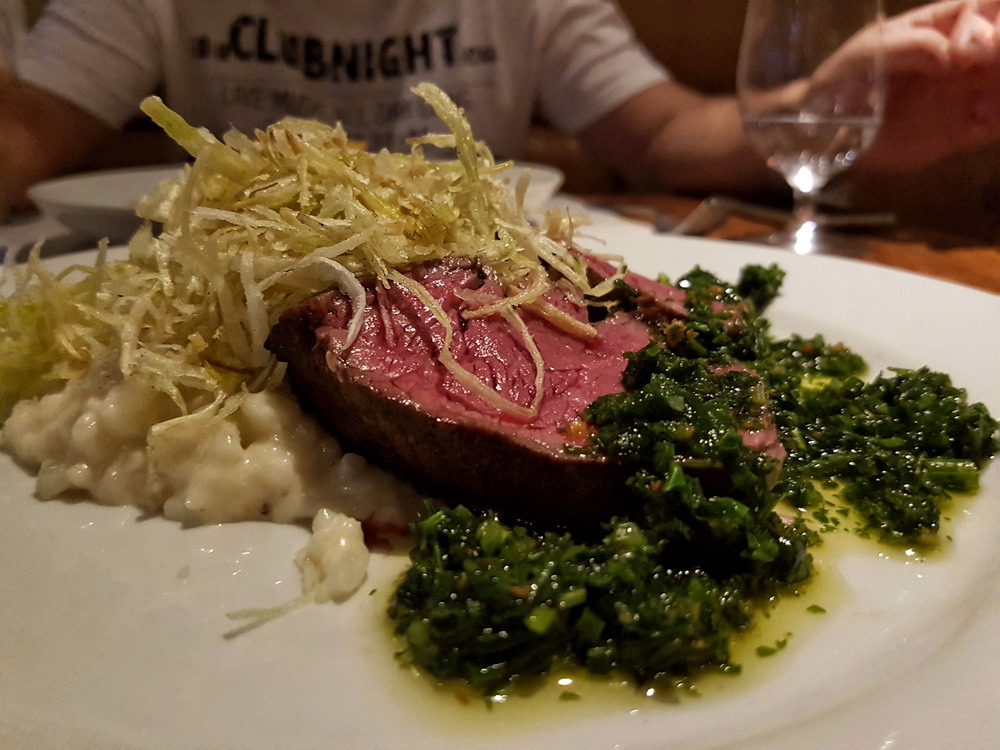
We tried their awesome vine (although my favorite ones are still our Slovenian vines) and if we come to Rio again some day, we would definitely revisit Zuka restaurant.
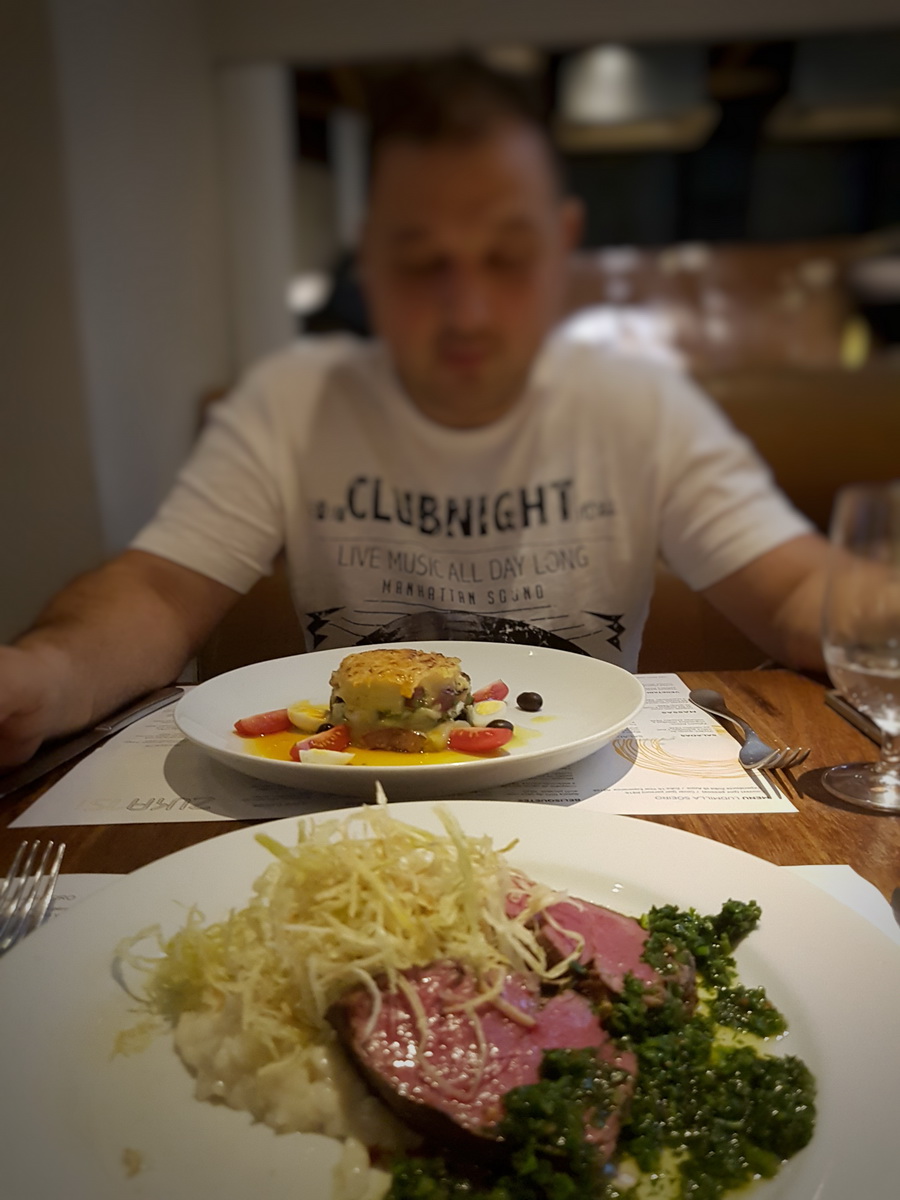
Rascal Restaurant
Known for its homemade bread and pizza, meat dishes and pasta, which are served directly from the wood-fired oven. Rascal has an open kitchen too, so here they are: Rascal Restaurant website

Balada Mix
From breakfast to dinner, Balada Mix is recognizable as a perfect gathering place at any time, especially for their juice bar, which in Rio is a tradition. It became popular not only for serving Cariocas from all styles, but for revealing a typical Carioca style. A very cozy place and healthy food! Liked it a lot.
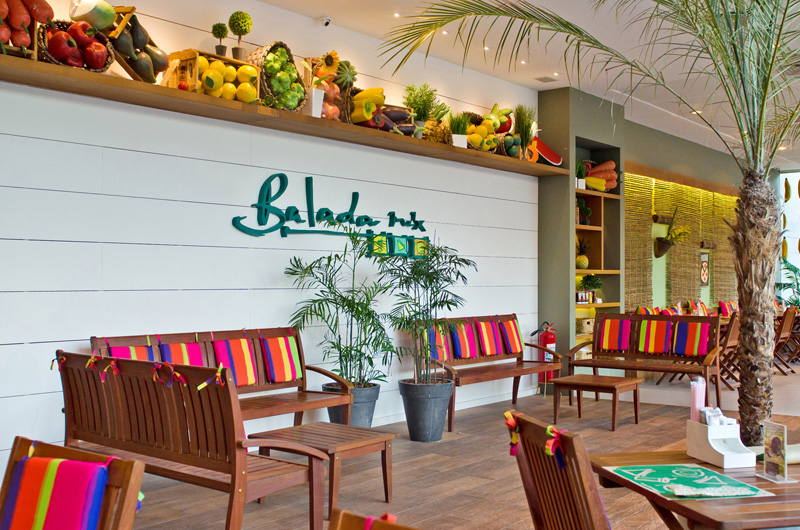
Botanical Garden (Jardim Botanico)
This was our last Rio trip on our very last day, so we took a taxi. The weather was cloudy again, but warm, so we decided to go for a drink.
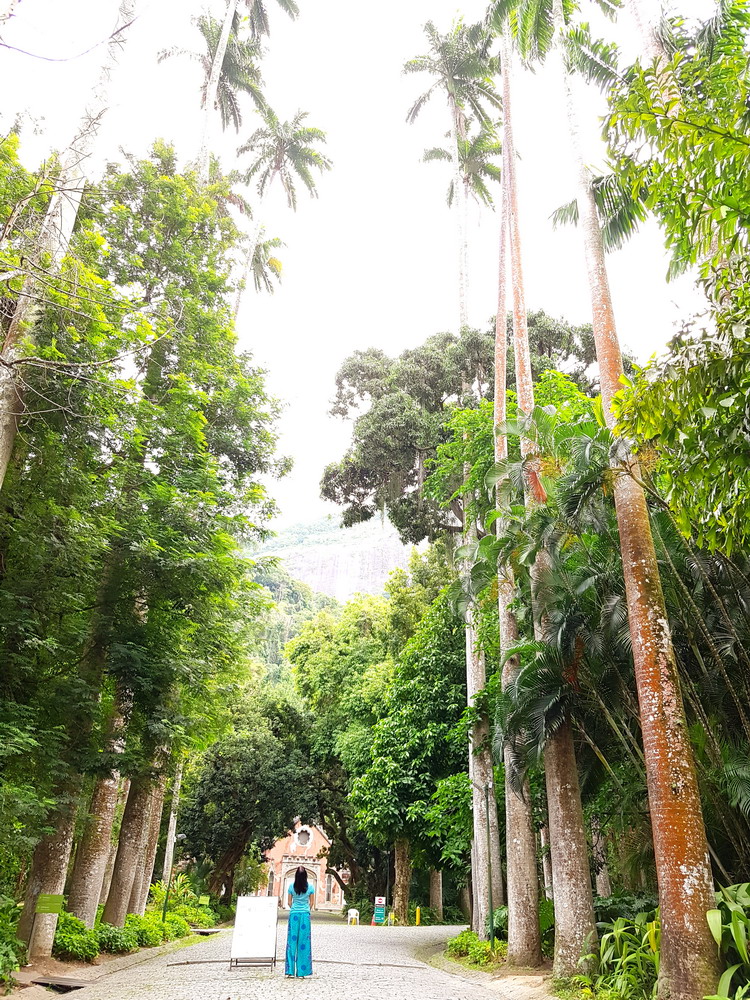
Coffee at the School of Visual Arts (Escola de Artes Visuais do Parque Lage) was a great idea.
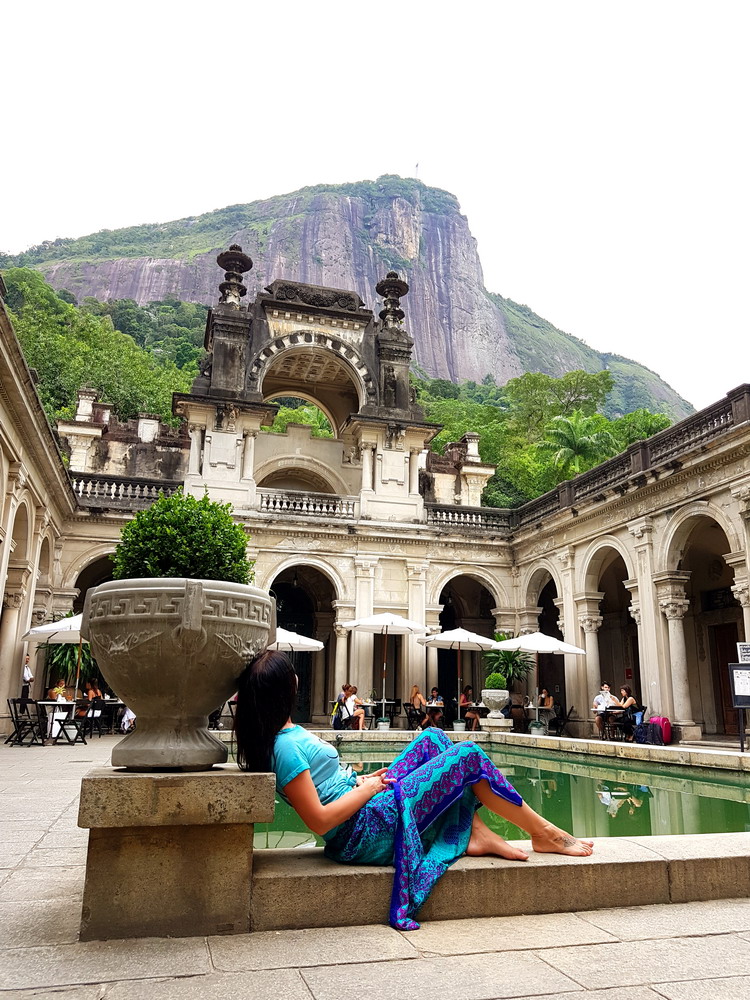
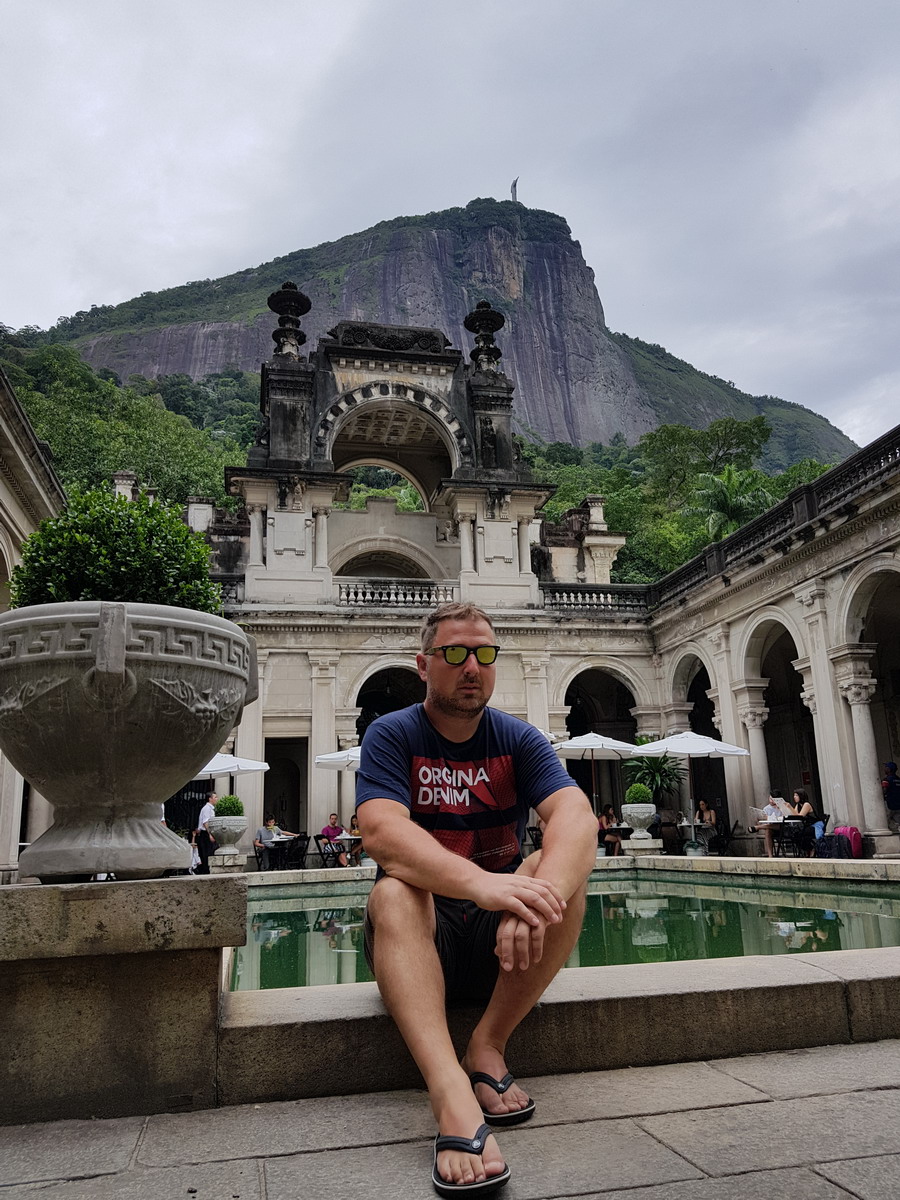
In the end, as much as some people got us a bit scared (regarding their previous experiences and safety tips) before we came to Brazil, our experience was excellent. The people were amazingly friendly and helpful. If it wasn't for Paola at our reception desk, we probably wouldn't be able to take as many trips as we did in such short time. It is really important to have some luck.
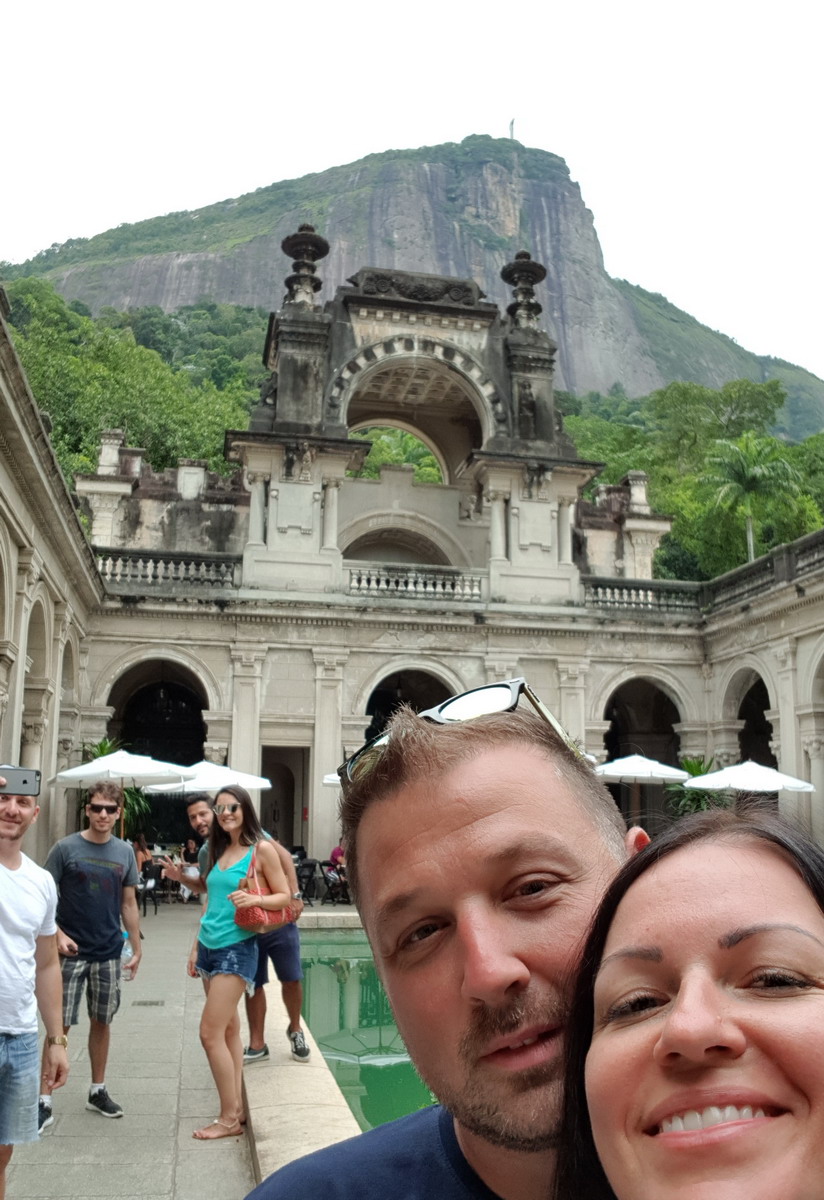
If you don't meet your 'Paola', you can take the metro, which is the cheapest and the fastest way to get around Rio, plus it is allegedly safe. The main line has 17 stops (from Siqueira Campos in Copacabana to Saens Pena). The subway system in Rio is opened from 5 a.m. to midnight Monday through Saturday and from 7 a.m. to 11 p.m. on Sundays and holidays. And yes, during the Carnaval it operates nonstop from Friday morning till Tuesday at midnight. It is possible to buy one-way, roundtrip or 10-ride tickets.
We missed the gorgeous view from Pedra Bonita and a visit to Praia da Joatinga though (lack of time). Very popular beach is Buzios beach, where you can enjoy Brazilian Carribean and it is about three hours drive from Rio towards north.
Dear 'Cidade de Deus', you have certainly left a piece of your heart inside of mine, which means you will be there forever. I will miss you for sure, especially in the winter time.

